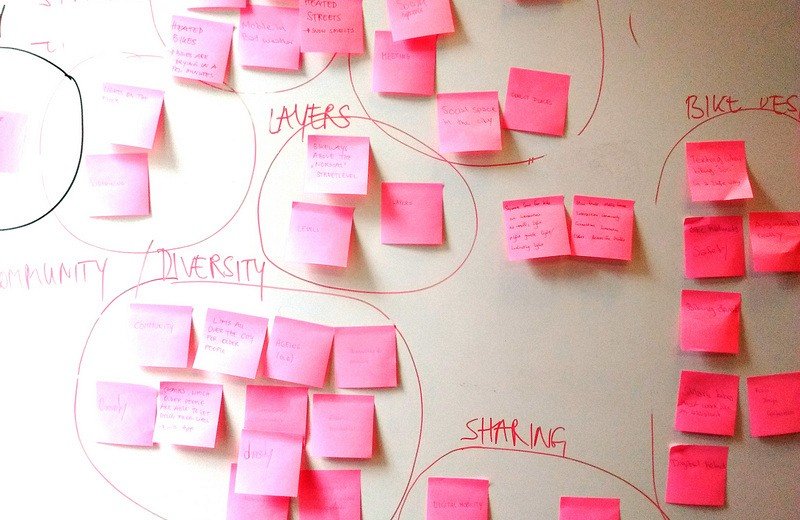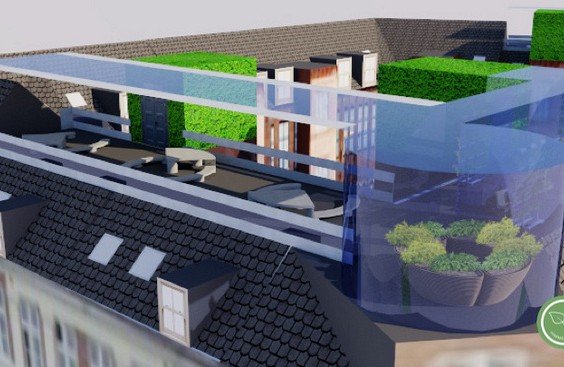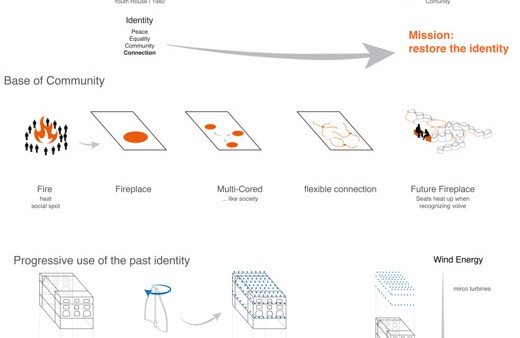The Future is here.
KEA Charrette 2016
Once again students from all over the globe gathered at KEA for the annual Charrette Workshop. Here they worked across disciplines and cultures to offer new concepts for urban living.
"60 fantastic young students from across the globe working with Urban Livability. We had a full week of hard work, hard studies, excursions into the city, and excursions into the future"
- Carsten Bech, Centre for Future Studies
How do we predict the future? For the 2016 Charrette the participating students and lecturers gave it a try. The Centre of Future Studies (CIFF) in Copenhagen came with the brief and KEA instructed the students in Design Thinking. Armed with those tools, each of the 9 groups started developing a concept based on one of three megatrends identified by CIFF.

Trust
Trust between citizens is vital to a peaceful society. Denmark is known for very high level of trust in the public space, but changes in society and the increased density in urban areas threaten the trust level. How can the urban environment encourage people to feel at ease and trust each other?
Urban Mobility
Despite the fact that an increasing number of activities can be dealt with remotely, people still need to get around physically. Copenhagen is known for its cycling culture, but urban density requires increasingly complex traffic solutions. How would you develop a solution complying with the future traffic situation in bigger cities?
New Spaces - New Functions
The Nørrebro area in Copenhagen has one of the highest plot ratios in Denmark. That puts extra strain on the flexibility of public spaces. How will our daily lives challenge the thresholds between public and private spaces in the future? What impact will this have on the utility, character and availability of public spaces?

Bringing people and buildings together
The main characteristic of a Charrette project is its ability to bring cultures and knowledge together. Architecture students learn about connectivity from communication students that in turn learn about structure from industrial design students and all learn valuable project management skills.
"It's not just the structure of the building that matters. It's getting people involved."
- Student in KEA Charrette 2016
Participating students not only expand their academic knowledge, but also their network and cultural understanding and this instant global community is appreciated by all students and lecturers involved.
"Working with people from all over the world is SO interesting and gives you just good feelings. I'm so happy that I did this"
- Student in KEA Charrette 2016
The end results are often surprising and inspiring. For the 2016 Charrette students inspired us with gardens in the sky, innovative burial museums, social rain communities, and bike storage benches.
"I thought it was especially inspiring to see how the students used the cityscape in their attempt to manage urban congestion. The winning project with the vertical cemetery was just extremely well thought out"
- Morten Stovegaard, KEA Lecturer

Innovative Solutions
The group premise of the Charrette workshop encourages the students to do their very best and on throughout the week the mood in the workrooms got increasingly intense as groups developed their concepts for presentation.
From Tuesday student groups were joined each afternoon by a team of advisors consisting of academics and professionals. The advisor teams would encourage, critique and harness the students ideas and sometimes affect an overnight change of concept – taking full advantage of the long KEA opening hours.
The intensive work paid off on Friday as students displayed their results in an IGNITE presentation and exhibition. A team of judges evaluated each project and handed out appropriate critique and praise. For Anders Jørn Jensen, the manager at Miljøpunkt Nørrebro this was a positive experience: “We in the organization look forward to working with these ideas in the future.”.
Unlimited Network Opportunities
The Charrette impact is not limited to the specific calendar week. The waves created in the workshop week extend beyond the immediate results and solutions as students create networks that transcend nationalities and subject areas.
As one student expounds: “It’s eye-opening. You don’t get a chance to do this anywhere else while you are studying (…) This has to become a part of our education if we want to make the world better ”
Overview of participants
10 Schools
10 schools participated in the Charrette 2019
Beuth Hochschule für Technik, Berlin, Germany
Centro Universitário Belas Artes de São Paulo, São Paulo, Brazil
Fontys University of ICT, Eindhoven, The Netherlands
George Brown College, Toronto, Canada
London South Bank University, London, United Kingdom
Otis College of Art and Design, Los Angeles, CA, USA
Politecnico di Milano, Milano, Italy
Istanbul Aydin University, Istanbul, Turkey
Senac São Paulo, São Paulo, Brazil
KEA, Copenhagen, Denmark
9 Groups
Group 01: Interactive Flow
Group 02: Hygge Parking
Group 03: UTOPI
Group 04: Himmel Haven
Group 05: House of Genfødsel
Group 06: GreenLOT
Group 07: Jagtvej 69 Fællesskab
Group 08: The Dead Come Alive
Group 09: RainCollective
80 Students
Architecture
Construction Technology
ICT & Media
Industrial Design
Graphic Design
Communication and Journalism
24 Expert Advisors
Durita Hoydal
(KEA, Copenhagen, Denmark)
Petra Ahde-Deal
(KEA, Copenhagen, Denmark)
Herman Bailey
(KEA, Copenhagen, Denmark)
Morten Kjær Stovegård
(KEA, Copenhagen, Denmark)
Faisal Fawsi Jarkass
(KEA, Copenhagen, Denmark)
Hans D. Andreassen
(KEA, Copenhagen, Denmark)
Thomas Ringhof
(KEA, Copenhagen, Denmark)
Brian Wendin
(KEA, Copenhagen, Denmark)
Jan Johanson
(KEA, Copenhagen, Denmark)
Gisela Glass
(Beuth Hochschule für Technik, Berlin, Germany)
Mattias Esig
(Beuth Hochschule für Technik, Berlin, Germany)
Alexandre Kuroda
(Centro Universitário Belas Artes de São Paulo, São Paulo, Brazil)
Maria Carolina Garcia
(Centro Universitário Belas Artes de São Paulo, São Paulo, Brazil)
Myrna Nascimento
(Senac São Paulo, São Paulo, Brazil)
David Johannes Eduardus Schol
(Fontys University of ICT, Eindhoven, The Netherlands)
Jo-An Kamp
(Fontys University of ICT, Eindhoven, The Netherlands)
Lori Endes
(George Brown College, Toronto, Canada)
Laura-Jane Filotrani
(London South Bank University, London, UK)
Dr. Jenny Owen
(London South Bank University, London, UK)
Richard Shelton
(Otis College of Art and Design, Los Angeles, CA, USA)
Rafaella Colombo
(Politecnico di Milano, Milano, Italy)
Carsten Beck
(Institute for Future Studies, Copenhagen, Denmark)
Roxana Marghidanu
(Copenhagen, Denmark - Architecture & Design)
Yrsa Gregersen
(KEA, Copenhagen, Denmark)
About the Author


